Alexander BARENTSEV (Russia)
On 9-10 June Moscow hosted the forum ‘Afghan Drug Production-a Challenge to the International Community’. The event brought together participants from over 40 countries, including delegates from the UN, SCO, CSTO, NATO. Among the high-ranking participants there were Mr. Antonio Costa, Executive Director of the UN Office on Drugs and Crime (UNODC); Mr. Hamid Ghodse, President of the International Narcotics Control Board; Mr. Patrick Ward, Deputy Director of Supply Reduction in the US Office of National Drug Control Policy; Russia’s Foreign Minister Sergei Lavrov and Deputy Minister of Economic Development, Igor Manylov, and the heads of anti-drug and law-enforcement agencies from many countries, as well as scholars, politicians, public figures and members of different religious denominations.
Addressing the forum, President of Russia Dmitry Medvedev said that he had approved a new government strategy outlining the national anti-drug policy until 2020. Russia announced readiness for taking every effort to set up an international anti-drug coalition. Russia’s drug control chief Viktor Ivanov elaborated on the announcement. The Raduga-2 (Rainbow-2) plan offers seven consecutive steps to eliminate global heroin threat. Moscow insists that the UN recognize the Afghan drug threat as a global challenge. According to Mr. Ivanov, the proposal was welcomed with enthusiasm in Afghanistan, where the number of drug addicts has already risen to about 1 million (most of them are opium smokers). Experts in the West describe the current generation of children in Afghanistan as ‘lost’: if the so-called ‘heroin babies’ do not receive opium-laced breast milk, they suffer from the acute withdrawal syndrome.
According to the reports by the UN and the IMF, the world-wide trade in illicit drugs is currently estimated at $600 billion,which makes 7,6% of all international trade. 70% of the money possessed by the world’s largest criminal groups come from drug business. Drug dealing is the most lucrative business, bringing from 300 up to 2000% revenue. In the US, a drug addict spends from $30 to $50 daily. In Germany, a heroin addict has to pay for 150 euros on average for his daily dose. In Russia, these figures are 1200-2000 roubles ($40-65).
Riots in different parts of the world – in Western Europe, in Russia, in Central Asia (recently – in the Ferghana Valley), and in the North Caucasus – have been paid with the money raised through illegal drug trade.
The level of opiate production in Afghanistan now is twice as high as in the whole world a decade ago. In 2010 Afghanistan has taken the lead in hashish production with the crop estimated at 3,000 tons. Every year Afghan opium kills up to 100,000 people worldwide- more than any other drug. The Afghan opium is consumed by 15 million people, two thirds of them are heroin addicts. The Afghan drugs are mostly consumed in Russia, Iran and in the EU countries.
However, the West has not yet become fully aware of the Afghan drug threat. Central Asia manages to stop 5% of the heroin flow from Afghanistan; Russia – up to 40%, but when it reaches the Balkans, it becomes almost impossible to seize. Kosovo is a classical example of another NARCO-STATE, a safe haven for drug dealers, the province is the world’s major distributor of Afghan drugs.
”The UN anti-drug declaration has proved ineffective. NATO has not managed to succeed in fighting the Afghan drug trade and does not appear to be much concerned over it,- Russia`s drug control chief Viktor Ivanov says.- The UN has handed over some of its responsibilities to NATO, and the latter, in its turn, has made the Afghan government responsible for the situation”.
Look at how NATO has been ‘fighting’ the Afghan drug production: in 2007-2009 the number of arrested drug dealers decreased by 13 times, and the list of destroyed drug labs reduced ten-fold (from 248 to 25).
Annual $ 0,5 billion subsidies from the EU and the US to support ‘alternative’ agriculture in Afghanistan are spent on something unknown which in no way helps to cut down plantations used for illicit drug production. Meanwhile, Colombia spends much less ($50 million per year) to destroy its coca crops, and uses special chemical substances to achieve better results in its anti-drug policies. As a result, Colombia is fighting drug production 40 times better than Afghanistan.
The Russian diplomats should bear in mind that the Afghan drug production has never become a subject for debate at the UN Security Council. The West does not pay enough attention towards the issue. The documents released at the latest conference on Afghanistan in London contained 34 paragraphs but the Afghan drug issue was mentioned only once, in the 27th item.
Russia`s Rainbow-2 plan, among other measures, stipulates:
– to destroy opium poppy crops,
– to include in the UN sanctions list the names of the Afghan landlords who provide areas of land for opium poppy cultivation; to launch the official cadastral record of the country`s southern provinces,
– to include a paragraph into the ISAF mandate about obligatory destruction of opium poppy plantations in Afghanistan,
– to boost anti-drug cooperation between the special services, exchange intelligence data, including reports on the location of drug labs, and the delivery of illicit drug precursors,
– to train drug officers.
In addition to that, it is also important to boost energy industry in Afghanistan and offer the local population at least 2 million job places. To start with, it would be the right thing to destroy no less than 25% of opium poppy crops. For example, in the US and in Latin America the use of chemical defoliant helped to destroy 75% of coca crops.
As it has been mentioned already, Russia`s proposal was unanimously approved by the Afghan officials, even in Helmand province, a hotbed for drug traffickers. The idea to sanction landlords for cooperation with drug dealers was welcomed with great enthusiasm. There was an article in the Khidmatgar newspaper (in Pashto) expressing the words of solidarity with Russia.
Now it is high time to prove that efforts Russia has made to bring home to the international community its ideas were not in vain.
Source: Strategic Culture Foundation
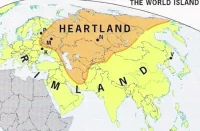
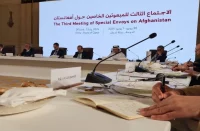
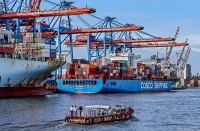



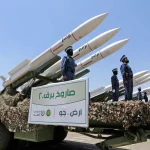

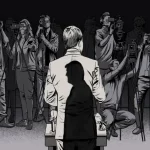





The War on Drugs is widely recognised as a big failure. Law enforcement just drives up prices, making the drug trade more profitable for intelligence agencies (ISI, CIA, MI6) and their criminal allies.
Russia should learn from history, in particular from China’s course of action taken after the 19th c. opium wars.